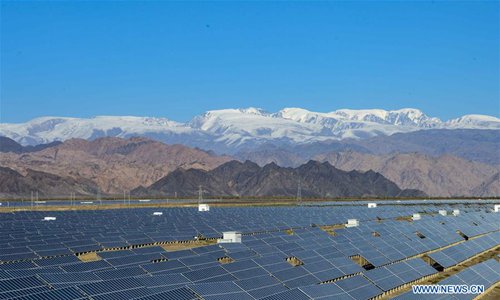A Chinese lawmaker called for accelerating the development of new energies in Xinjiang to build the region into a large green energy hub.
Zhang Xin, Chairman of Tebian Electric Apparatus (TBEA), secretary of the committee of the Communist Party of China in the company and deputy to the National People’s Congress, advocated building a large new-energy base in the Xinjiang Uygur Autonomous Region in one of his proposals submitted to the legislature.
The deputy said the construction of a new power system should be promoted. The consumption of fossil fuels is the main source of carbon emissions in China, accounting for about 88 percent of all carbon emissions in the country, and the emissions in power generation account for approximately 41 percent of all emissions in energy industries, Zhang said.
Xinjiang is endowed with resources like wind and abundant solar energy, he said, which are a tremendous potential for the development of new energies.
Zhang believes that promoting the development of clean coal power in Xinjiang is an important measure to ensure the safe and reliable supply of energy.
A new power system requires a certain amount of clean and efficient coal-fired thermal power to ensure a secure supply of energy, safeguard national energy security and achieve the target of carbon emissions reduction.
Xinjiang is rich in energy resources, including wind and solar power, and boasts a massive power generation capacity. With power transmission channels built, the region can transfer and sell some unused power to other parts of China.
In addition, the construction of power transmission infrastructure has driven the development of thermal, wind and photovoltaic power generation in the region.
Xinjiang has transferred 503.7 billion kWh of locally-generated electricity to other parts of the country since 2010, Xinhua News Agency reported in February citing the State Grid’s Xinjiang branch.
Among them, 137.8 billion kWh were generated with photovoltaic and wind power. It is equivalent to burning 41 million tons of standard coal, reducing emissions of carbon dioxide by 110 million tons and greatly contributing to China’s green and low-carbon energy transition.
Photo taken on September 20, 2018 shows a PV power plant in Hami, Northwest China’s Xinjiang Uygur Autonomous Region. Photo: Xinhua




